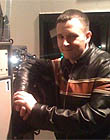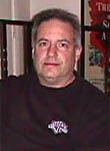|
|
 
|
|
Author
|
Topic: How were/are video transfers made?
|
Aaron Garman
Phenomenal Film Handler

Posts: 1470
From: Toledo, OH USA
Registered: Mar 2003
|
 posted 07-29-2011 09:48 PM
posted 07-29-2011 09:48 PM




So I think I understand modern transfers: there is a master digital file that is then compressed for Blu-ray/DVD/etc. and then loaded onto the disc in the respective file format. That master digital file of course comes from many a different source, but I'd guess many from a 2K workflow.
My real question is how did it work before digital editing, digital tape, etc? How did they get the film (whether from a OCN, release print, etc.) onto say VHS, LaserDisc, or even television? And what format were those master tapes in? I'd imagine even some early DVDs had some sort of master tape before all digital workflows became popular.
Sorry for the novice questions, but I'm trying to understand that despite formats like Blu-ray having so much better resolution and clarity, that some of my old LaserDiscs have a more natural, analog, film-like look despite lower resolution and video noise.
AJG
| IP: Logged
|
|
|
|
Scott Norwood
Film God

Posts: 8146
From: Boston, MA. USA (1774.21 miles northeast of Dallas)
Registered: Jun 99
|
 posted 07-30-2011 07:54 AM
posted 07-30-2011 07:54 AM





The earliest system (used from the beginning of television through the 1980s and, to some extent, still) was a "film chain." This typically consisted of one or more 16mm or 35mm film projectors set up to project into a multiplexer (mirror device) that directed the images to a film-chain camera. The output of the camera would then be broadcast on the air or recorded to tape. 2" Quad and 1" C-type would have been common in the 1970s through the 1980s, with 1", Beta SP, D1, D2, and Digi-Beta becoming more common in the 1990s. D1, D2, and Digi-Beta are all digital formats; the others are analog.
Film-chain projectors in NTSC-land have fast-pulldown intermittents and 5-bladed shutters in order to sync properly with 59.94 Hz interlaced video. In PAL-land, the film is run at 25fps for the same reason.
Every TV station had a 16mm film-chain setup through the mid-1980s, at least. (Some may still have the equipment.)
I believe that flying-spot scanners like the Rank and Bosch were a 1970s and 1980s invention. Unlike film chain equipment, they are gentler on film and allow transfers from negative material, as well as scene-to-scene color correction. These are still used widely today, although frame-by-frame scanning has become more common, at least for big-budget feature films.
In 1995, I was involved with a project where the recommended process (which we followed) was a Rank film transfer to Beta SP, then a dub to 1" C-type for use as a master for low-volume VHS duplication (about 100 copies). Beta SP was considered to be of higher quality, but 1" was considered to be less prone to dropouts. The duplication process involved a playback deck, a distribution amp, and a rack of high-end VHS VCRs. High-volume VHS duplication is/was an entirely different process, which I don't know enough about to explain here.
| IP: Logged
|
|
|
|
|
|
|
|
|
|
All times are Central (GMT -6:00)
|
|
Powered by Infopop Corporation
UBB.classicTM
6.3.1.2
The Film-Tech Forums are designed for various members related to the cinema industry to express their opinions, viewpoints and testimonials on various products, services and events based upon speculation, personal knowledge and factual information through use, therefore all views represented here allow no liability upon the publishers of this web site and the owners of said views assume no liability for any ill will resulting from these postings. The posts made here are for educational as well as entertainment purposes and as such anyone viewing this portion of the website must accept these views as statements of the author of that opinion
and agrees to release the authors from any and all liability.
|

 Home
Home
 Products
Products
 Store
Store
 Forum
Forum
 Warehouse
Warehouse
 Contact Us
Contact Us




 Printer-friendly view of this topic
Printer-friendly view of this topic













